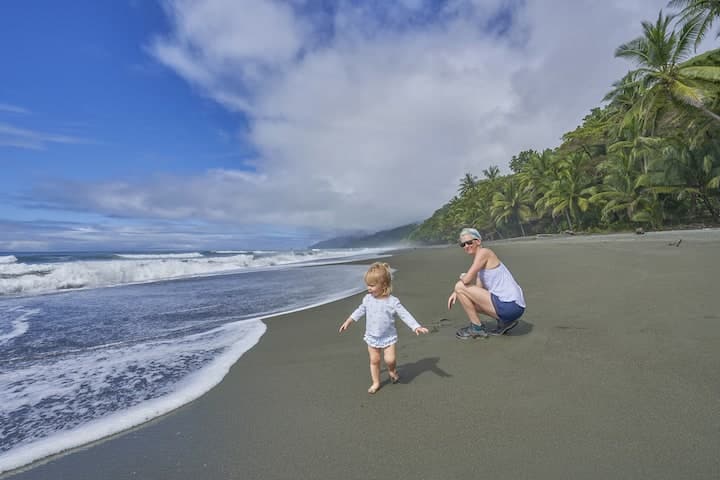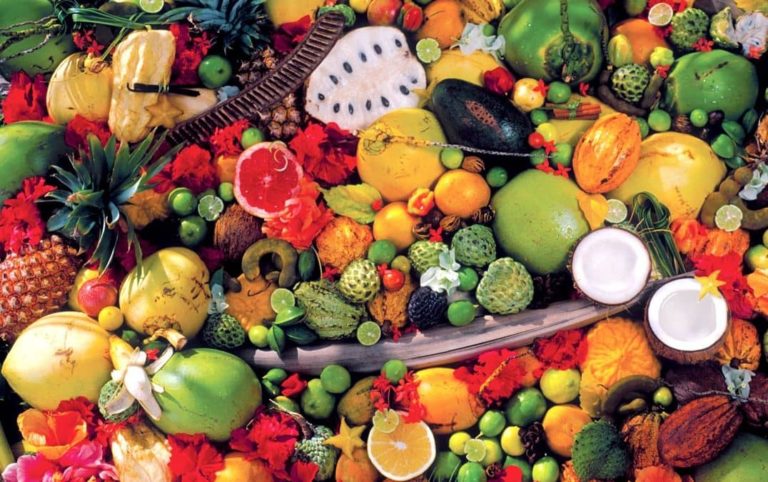Costa Rica is often nicknamed “the land of volcanoes” due to its incredible concentration of volcanoes, both active and extinct, that dot the country’s landscape. It is home to nearly 200 of them, although only a small fraction are active.
Costa Rica has so many volcanoes due to its geological location on the Pacific Ring of Fire, an area surrounding the Pacific Ocean that is particularly prone to earthquakes and volcanic eruptions. This belt is formed by the interaction of several tectonic plates, including the Cocos Plate and the Caribbean Plate, which meet beneath Costa Rican territory.
This geological process explains why Costa Rica has so many active volcanoes, and why relatively regular eruptions occur in some areas.
The tectonic dynamics of this area make Costa Rica one of the most suitable places to observe volcanic phenomena, with volcanoes that have not only shaped the landscape, but also played a crucial role in the country’s ecosystem and economy.
Here are the main reasons for this abundance of volcanoes:
Tectonic plate subduction: The Cocos Plate, which lies beneath the Pacific Ocean, moves northeastward and plunges beneath the Caribbean Plate. This subduction phenomenon causes high pressure and temperatures, causing the Earth’s crust to melt into magma. This magma rises to the surface, forming volcanoes.
Plate convergence: Costa Rica is located at a tectonic convergence point, where several plates meet. This interaction creates faults and weak zones in the Earth’s crust, facilitating the emergence of volcanoes. This process has been going on for millions of years and is still ongoing today.
Historical volcanic activity: Over the centuries, this tectonic activity has contributed to the formation of numerous volcanoes, some active, others extinct. Costa Rica is a geologically young region, which means that volcanic processes are still very present there.
Rich and fertile soil: This volcanic activity has enriched the soil with minerals, promoting the growth of lush vegetation. The volcanic soil is ideal for agriculture and has allowed exceptional biodiversity to thrive in the country.
Active volcanoes in Costa Rica
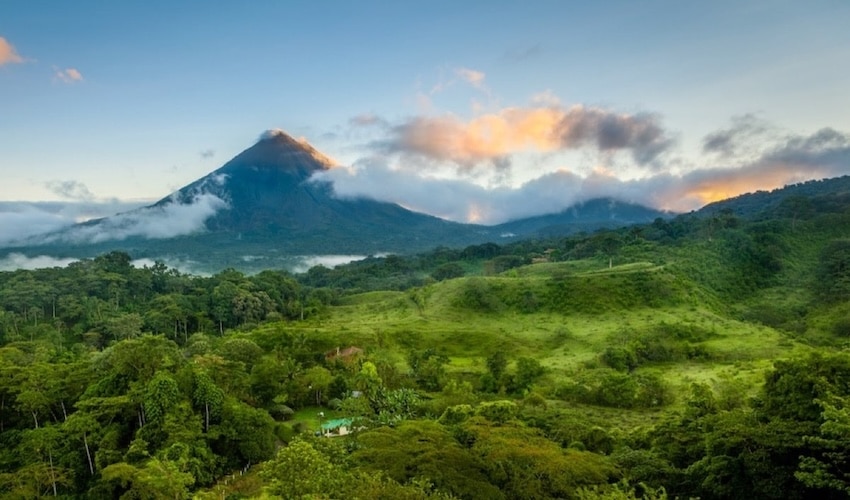
Arenal Volcano
Arenal Volcano is undoubtedly the most emblematic volcano in the country. This 1,643 m stratovolcano erupted on July 29, 1968, and has since been considered one of the most active volcanoes in the country. For years, Arenal regularly erupted lava, making it one of the country’s main tourist attractions. However, since October 2010, it has entered a dormant period, and its activity consists mainly of stone jets and smoke.
However, activity is still present, as evidenced by the many thermal springs in the surrounding area. The molten magma of the Arenal heats the water of the rivers and the underground water tables. This has allowed the development of thermal baths on the Tabacon River in particular and on the slopes of the volcano. The slopes of the Arenal Volcano National Park are covered with tropical forests which allow you to observe a very rich fauna and flora as well as the ancient lava flows. It remains an impressive and unmissable site to visit.
A Costa Rican icon
It plays a key role in the local economy, with numerous eco-lodges, hotels, and restaurants springing up around La Fortuna to meet the growing demand from travelers. In addition to outdoor adventures, the area is also a popular destination for couples seeking romantic getaways, thanks in part to the hot springs and spectacular views of the volcano. Geothermal activity around the volcano has given rise to several hot spring complexes, ideal for relaxing after a day of exploring.
The area around the volcano is rich in biodiversity. Visitors can observe numerous species of birds, monkeys, coatis, and other exotic animals during their hikes.
Access to Arenal Volcano is easy, and the national park entrance has parking and restrooms. This is where most trails start.
Open daily from 8:00 to 16:00
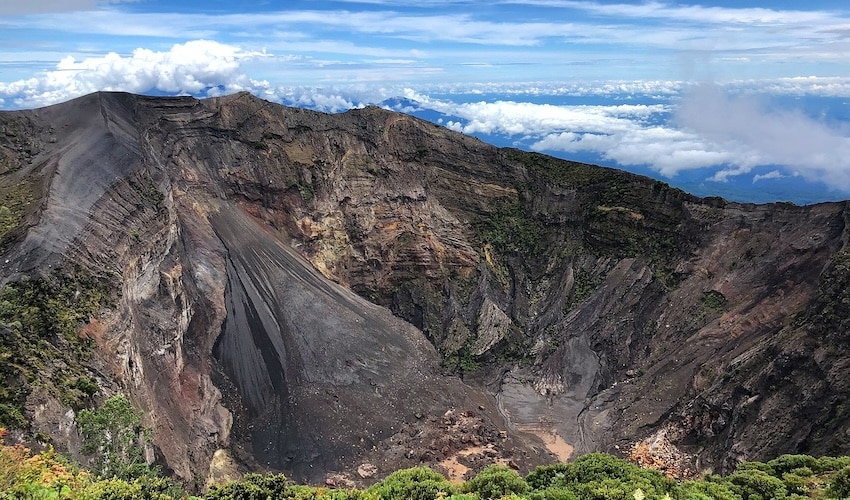
The Irazú volcano
At an altitude of 3,432 m, Irazu Volcano is the highest active volcano in Costa Rica. Its name is believed to come from “ara-tzu,” meaning “place of thunder.” Its first recorded eruption was in 1723, and since then, this stratovolcano has continued to erupt and regularly produce fumaroles. The most famous eruption began on March 19, 1963, the day of U.S. President John F. Kennedy’s visit to Costa Rica. It covered the capital and most of the Central Valley in ash and continued until 1965.
The national park is home to the five craters of this colossus.
The main crater, Playa Hermosa, attracts attention with its striking green lake. This crater lake offers a breathtaking spectacle, especially on a clear day. Its maximum depth reaches 200 meters, and its pH ranges between 0 and 3.5, making it extremely acidic.
A second crater, located north of the first, the Diego de la Haya crater reveals a magnificent turquoise lake. This crater has a diameter of 800 meters and a depth of 200 meters. Its name honors Diego de la Haya Fernández, a Spanish explorer who climbed the volcano in 1727.
El Gigante, the largest of the five craters, is distinguished by its irregular shape and imposing appearance. With a diameter of 1.7 kilometers and a depth of 500 meters, it offers an exceptional panorama of the surrounding area. This crater, inactive for thousands of years, houses a secondary cone in its center.
El Promontorio, or “the promontory,” takes its name from its prominent position on the rim of the volcano. This crater, with a diameter of 500 meters and a depth of 200 meters, offers breathtaking views of the Playa Hermosa and Diego de la Haya craters. Its horseshoe shape makes it particularly picturesque.
Finally, El Principal Crater, although less accessible than the others, is of definite historical interest. This crater, the oldest in Irazú, was the site of the volcano’s last major eruption in 1963-1965. It offers a fascinating insight into the colossal forces that shaped this lunar landscape.
Irazú Volcano National Park is located near Cartago, 35 kilometers from San José. Access is easy with parking very close to the main crater. To enjoy the view, it is best to come early in the morning with a sweater and a windbreaker because at the summit there are temperature variations of -6°C to +18°C… a trail allows you to go around the crater and see for kilometers around.
Open daily from 8:00 to 16:00
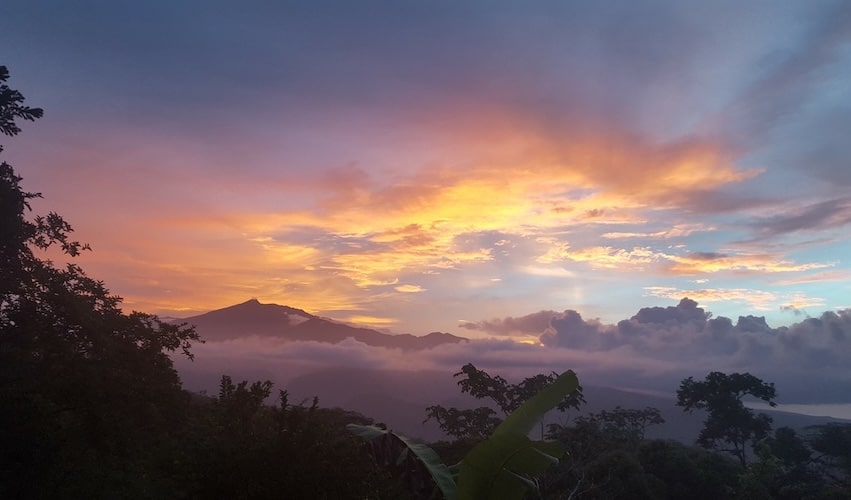
Turrialba Volcano
Turrialba Volcano, rising to 3,342 meters above sea level, stands proudly in Costa Rica’s Central Mountain Range. This active volcano is known for its constant fumarolic activity and gaseous eruptions, earning it the nickname “El Viejo Fumador” (The Old Smoker).
It is one of the most notable volcanoes in Costa Rica due to its recent eruptions and its impact on the surrounding region. Located in the national park of the same name, near the town of Turrialba, this volcano has captured the attention of scientists and visitors alike due to its regular eruptions of ash and gas.
In recent decades, Costa Rica’s Turrialba volcano has become increasingly active, with eruptions disrupting local communities and air traffic in the region. The September 2016 eruption ejected a cloud of gas, steam, and ash that reached 4 km (2.5 miles) high. These eruptions were characterized by columns of ash and gas rising into the sky, as well as emissions of volcanic material that covered the surrounding areas with fine dust.
Access to the summit of Turrialba Volcano is often restricted to visitors, so it’s important to check in advance. However, the national park offers miles of hiking trails that allow visitors to observe the volcano from safe vantage points. These trails also provide an opportunity to admire local flora and fauna, including bird, mammal, and plant species unique to the region.
Turrialba Volcano is also known for its hot springs and fumaroles that emanate from its slopes. It is the third most popular thermal spa region in Costa Rica after Arenal and Rincon de la Vieja. These geothermal manifestations are a testament to the intense activity taking place beneath the Earth’s surface.
Opening hours to be checked.
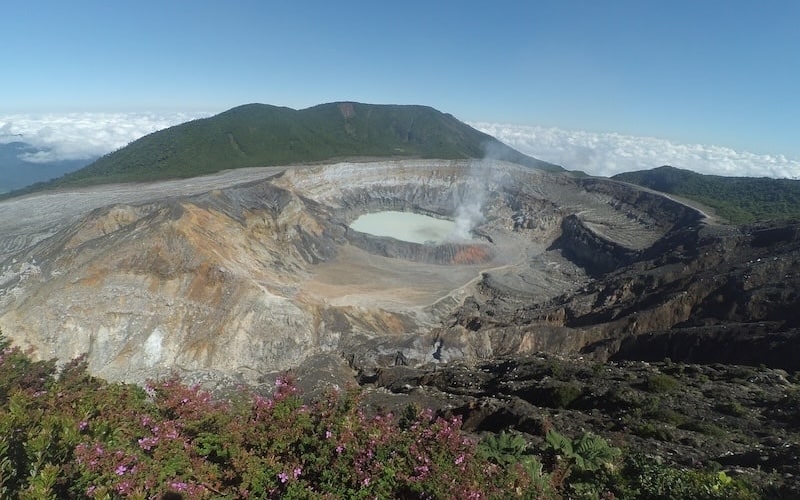
The Poás Volcano
Poás Volcano is one of Costa Rica’s most iconic and accessible volcanoes, located in the Poás National Park in the province of Alajuela, 54 kilometers from San José. Rising to an altitude of approximately 2,708 meters (8,885 feet), it has one of the largest and most active craters in the world.
This volcano is characterized by its impressive main crater, which houses an acidic lake of an intense turquoise blue. This lake, known as Laguna Caliente (Hot Lake), is one of the main attractions of the Poás Volcano. Laguna Caliente is one of the most acidic lakes in the world, with a pH that can vary between 0 and 1.
Poás Volcano National Park offers visitors several hiking trails that traverse lush cloud forests, fumarole fields, and alpine vegetation. The trails also offer panoramic views of the main crater and its surroundings, allowing visitors to admire the natural beauty of the area.
In addition to its impressive landscape, Poás Volcano National Park is also an important site for scientific research. Scientists have been studying the activity of the Poás Volcano for decades, monitoring gas emissions, lake level variations, and other geological phenomena to better understand the volcano’s inner workings.
However, access to the main crater can sometimes be limited due to its volcanic activity. Sporadic eruptions of ash and gas can cause the national park to be temporarily closed for safety reasons. Despite these precautions, the Poás Volcano remains a popular destination for visitors to Costa Rica, attracting thousands of people each year to experience its natural beauty, lunar landscape, and fascinating geological history.
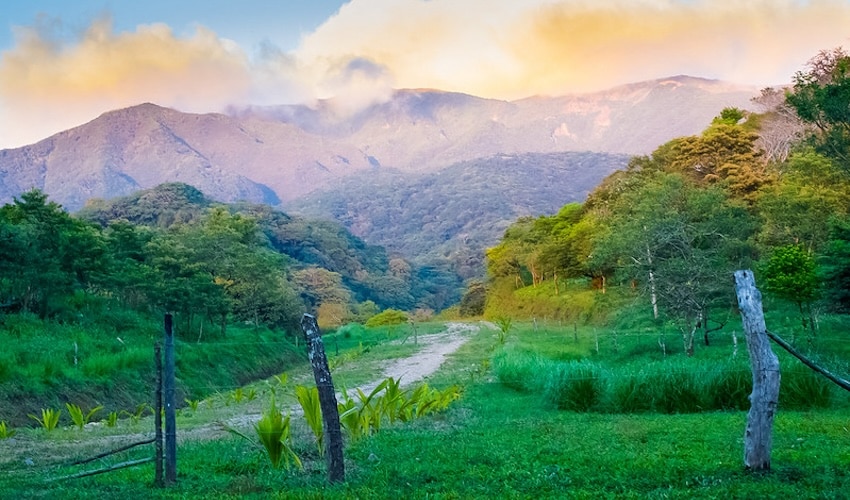
The Rincón de la Vieja volcano
Perched in the Guanacaste region of northwest Costa Rica, Rincón de la Vieja National Park is home to the 3,193-meter-high volcano. This active volcano, although less well-known than its neighbors Arenal and Irazú, boasts a rugged beauty and geological richness that attracts many nature-loving visitors.
Rincon de la Vieja Volcano is a stratovolcano with an altitude of 1,895 m. It has nine eruptive foci, including two volcanic cones, each crowned by a crater. It is located in northern Costa Rica, 25 kilometers from Liberia.
Only one of these craters is active. Fumaroles and geysers are constantly observed, a sign of significant geothermal activity. Indeed, the porous soil allows rainwater to infiltrate and when it meets the magma chambers (2,800°C), geysers of water and mud erupt from the volcano, thus feeding numerous hot springs.
Finally, there are two possible access points: Las Pailas and La Casona Santa Maria. Access to the crater is closed.
Best visited in the morning, wearing a good pair of walking shoes.
Rincón de la Vieja National Park is home to a tropical dry forest and a wealth of flora and fauna. Howler monkeys, sloths, tapirs, jaguars, and a wide variety of birds inhabit the lush rainforest that covers the slopes of the volcano. Rincón de la Vieja is a paradise for adrenaline seekers. Many adventure activities are available, such as rappelling through canyons, hiking across rugged terrain, and bathing in natural hot springs.
Open from 8:00 to 16:00 – Closed on Mondays.
Dormant volcanoes in Costa Rica
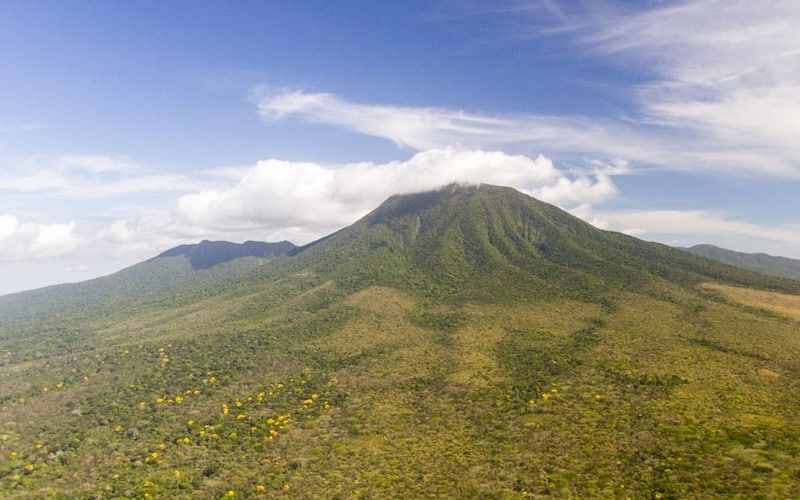
Orosi Volcano
Orosi Volcano is a stratovolcano, meaning it was formed by the successive accumulation of layers of lava, ash, and volcanic rock. Although it is no longer active, its geological history has shaped the surrounding landscape and given it a unique beauty.
A hike in the heart of nature
Numerous hiking trails crisscross the slopes of the Orosi Volcano, offering hikers breathtaking views of the Central Valley, Lake Cachi, and the surrounding mountains.
- Cloud Forest: The heights of Orosi Volcano are covered with a cloud forest, a unique ecosystem characterized by high humidity and dense vegetation.
- Flora and Fauna: You may be lucky enough to observe a multitude of birds, monkeys, butterflies, and a wide variety of tropical plants.
- Hot Springs: At the foot of the volcano, you can relax in various natural thermal waters.
Unlike its close neighbor, Arenal, the Orosi volcano is less crowded, allowing you to enjoy unspoiled nature.
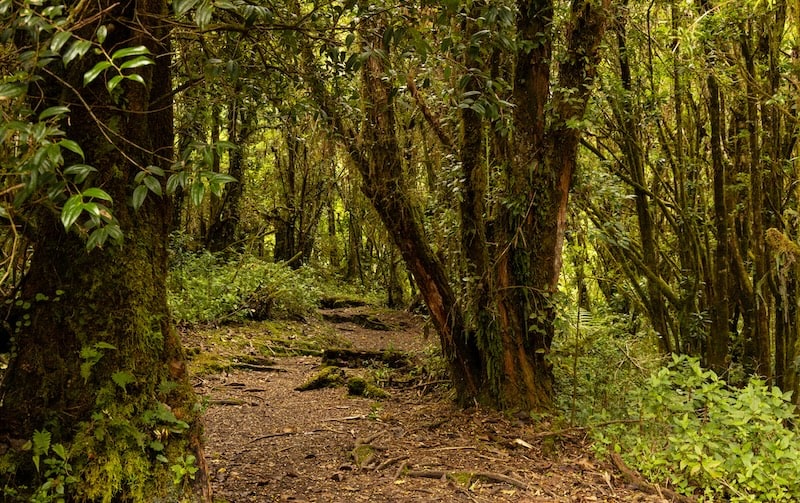
The Barva volcano
Barva Volcano, also known as Barba Volcano or Las Tres Marías, is a sleeping giant that stands proudly in Costa Rica’s Cordillera Central. At 2,906 meters, it is the third highest peak in the country, offering breathtaking views of the Central Valley.
Untouched nature
The Barva Volcano is a true sanctuary for biodiversity. Its slopes are covered in a lush cloud forest, home to a multitude of animal and plant species. Hikers can observe colorful birds, butterflies with multicolored wings, and unique flora.
Climbing the Barva Volcano is an unforgettable experience. The well-marked trail winds through the forest, offering panoramic viewpoints at every turn. The summit rewards hikers with a 360-degree view of the Central Valley and surrounding volcanoes.
At the summit of the volcano lies Laguna de Copey, a strikingly beautiful volcanic lake. Its crystal-clear waters reflect the sky and surrounding vegetation, creating a magical landscape.
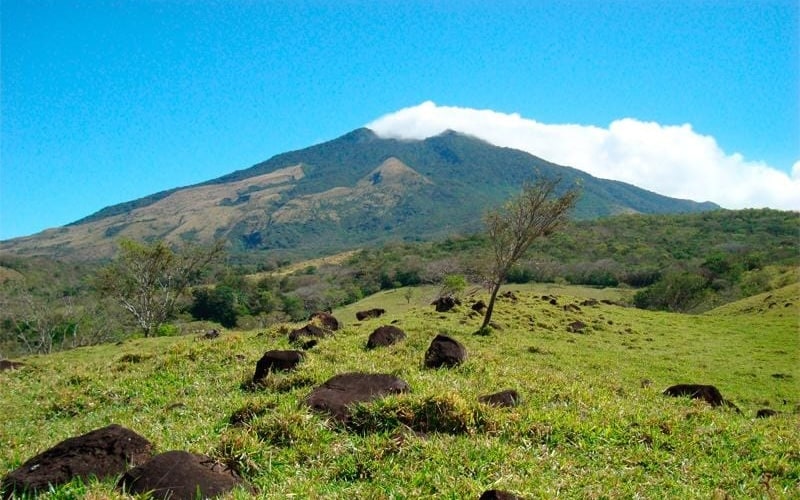
Miravalles Volcano
Miravalles Volcano, located in the Guanacaste province of Costa Rica, is a towering stratovolcano rising to an altitude of 2,028 meters. Although it is currently inactive, its geological history and environmental impact make it a must-see destination for nature lovers and adventurers.
The Miravalles Volcano covers nearly 4,300 hectares and is home to remarkable biodiversity. It includes tropical dry forests, humid rainforests, and pre-montane forests. This variety of ecosystems is home to a rich and diverse flora and fauna.
The Miravalles Volcano is home to one of the largest geothermal power plants in Central America. For over 30 years, this plant has been producing clean energy.
History of Costa Rica’s Volcanic Eruptions
Here’s a look at major volcanic eruptions in Costa Rica, focusing on some of the country’s most active volcanoes.
Arenal Volcano in 1968
Arenal Volcano is one of Costa Rica’s most famous volcanoes due to its spectacular eruption in 1968, after nearly 400 years of dormancy. This sudden eruption was devastating for the surrounding communities, including the villages of Tabacón and Pueblo Nuevo, which were buried under lava flows. The eruption lasted for several days, sending ash and rocks miles away. It left three distinct craters on the volcano’s flanks and transformed the surrounding landscape.
After this major eruption, Arenal Volcano remained active for decades, with regular lava emissions and minor explosions, providing a fascinating spectacle for visitors. Its last period of intense activity ended in 2010, and the volcano is currently in a dormant phase.
Irazú Volcano from 1963 to 1965
The Irazú volcano is known for its prolonged eruption between 1963 and 1965. This eruption became famous not only for its duration, but also because it began on the very day of U.S. President John F. Kennedy’s visit to Costa Rica in March 1963.
The eruption lasted two years, producing enormous amounts of ash that blanketed surrounding towns, including the capital, San José, located about 50 km from the volcano.
The ash caused significant damage to the country’s crops and infrastructure. Despite the negative impact of the eruption, the main crater of the Irazú volcano, which now houses an emerald green acidic lake, has become a popular tourist attraction.
Poás Volcano – 2017
Poás Volcano, one of Costa Rica’s most active volcanoes, experienced a series of explosive eruptions in April 2017, after several years of relative calm. These eruptions send ash and volcanic gases thousands of meters into the atmosphere, forcing authorities to temporarily close Poás Volcano National Park and evacuate surrounding communities.
The Poás crater is famous for its acidic lake, which is one of the most acidic in the world. The volcano erupted several times during the 20th century, including in 1953, 1989, and 2008, but the 2017 eruption was one of the most spectacular and dangerous. Toxic gas emissions persisted for several months, disrupting tourism and agricultural activities in the region.
Rincón de la Vieja Volcano from 2020-2021
Rincón de la Vieja Volcano, located in the national park of the same name, is another active volcano in Costa Rica. In June 2021, the volcano experienced a series of eruptions that sent plumes of ash and rock fragments miles into the atmosphere. These eruptions caused mudflows, or lahars, that affected rivers and farmland below.
The Rincón de la Vieja volcano is also known for its geysers, hot springs, and boiling mud pools, signs of the intense geothermal activity in the region. It previously erupted in 1991 and 2011, but the 2020-2021 eruptions were among the most intense in recent decades.
Turrialba Volcano from 2014 to 2016
The Turrialba volcano experienced a series of major eruptions between 2014 and 2016, sending plumes of ash reaching the capital and disrupting air traffic.
The largest eruption occurred in 2016, when columns of ash were projected more than 4,000 meters into the atmosphere. The ash blanketed several cities and caused school, business, and road closures. Juan Santamaría International Airport, located in Alajuela, was also forced to close several times due to volcanic ash.
Turrialba had been relatively quiet for most of the 20th century, but its sudden awakening in 2014 reminded Costa Ricans of the power of the region’s active volcanoes.
Arenal Volcano in 1525 and others
Although the 1968 eruption is the most recent and famous of the Arenal Volcano’s eruptions, it is important to note that the volcano had also been active long before. According to historical records, Arenal Volcano erupted in 1525, observed by Spanish explorers. This eruption, although less documented, marks the beginning of Arenal Volcano’s known eruption history. Before the 1968 eruption, it was considered extinct.
Costa Rica, with its many active volcanoes, is a country where volcanic eruptions play a key role in shaping the landscape and the history of local communities. These eruptions have shaped not only the country’s terrain, but also its culture and economy, particularly through volcano tourism. Whether it’s Arenal, Poás, Turrialba, or Irazú, each of these volcanoes tells a fascinating story and serves as a reminder of the impressive force of nature. Costa Rica remains a privileged place to observe and study volcanic activity safely, while enjoying its spectacular landscapes.
What precautionary measures are taken in the event of a volcanic eruption in Costa Rica?
Costa Rica has implemented a volcanic emergency plan to deal with potential eruptions.
This plan includes the evacuation of at-risk populations, constant monitoring of volcanic activity, the establishment of safety zones, and public awareness of volcanic risks. Local authorities are working closely with scientists to ensure everyone’s safety in the event of an eruption. It is not uncommon in the Poás, Arenal, or Rincon de la Vieja regions to have to reverse to optimize a possible evacuation.
Safety measures during a volcanic eruption:
- Follow the instructions of authorities: Listen to the instructions of local authorities and emergency services. Evacuate the area immediately if ordered to do so.
- Protect yourself from ash: Cover your mouth and nose with a mask or a damp cloth to avoid inhaling volcanic ash. Wear goggles to protect your eyes.
- Protect yourself from lahars: Lahars are dangerous volcanic mudflows. If you find yourself in a lahar risk area, evacuate immediately to higher ground.
- Protect yourself from volcanic gases: Gases can be toxic. Avoid areas where the smell of gas is strong or where visibility is reduced.
However, don’t panic; Costa Rica has experienced eruptions for many years and has never caused any casualties. Safety plans are effective and warnings are clear. Costa Rica Discovery is constantly up-to-date with information, and if one were to occur, we would undoubtedly be the first to inform you and provide you with the safety instructions to follow.
A recent look at Costa Rica
Why travel with us?

A flawless reputation since 2008

A single contact in French

Our presence on the ground all year round

Our expertise for a tailor-made offer


